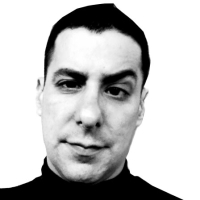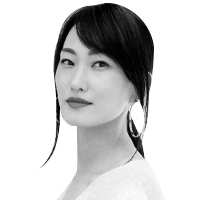TOKYO—In movies about the yakuza, the Japanese mafia, and in the real concrete jungles of the Japanese underworld, there is what might be called The Circle of Death. Every assassination tends to bring another, and in the past, and possibly in the present, funerals to mourn the dead often end up as cues for more bloodshed.
Police are investigating the possibility that the attempted murder on Tuesday of the leader of Japan’s newest yakuza group, Ninkyo Yamaguchi-gumi (The Chivalrous Yamaguchi-gumi) may have been connected to the funeral of another yakuza boss that same day.
Before dawn on Sept. 12, Shigeo Nishiguchi (aged 88), the sosai (supreme leader) of Japan’s second-largest organized crime group, the Sumiyoshi-kai, passed away. He wasn’t the only yakuza to die that day, but at least he was lucky enough to die of natural causes.
As protocol dictates, the current leader of the Yamaguchi-gumi (founded in 1915), the dapper Shinobu Tsukasa, headed to Tokyo from Kobe to pay his respects that morning. Rival yakuza groups in Japan often have friendly relations, including attending the funerals of other gang bosses, and their birthday parties as well. Although in the United States it’s a little hard to imagine a gang boss in the Crips attending a funeral for a member of the Bloods, in Japan that would be par for the course.
As Tsukasa and his entourage were riding toward Shinagawa Station from Western Japan, in Tokyo the Metropolitan Police Department and the media prepared for his arrival. It was Tsuka’s first visit to Tokyo in months, increasingly rare after the Yamaguchi-gumi split into two factions on Aug. 27, 2015, starting a long-running gang war.
The first group to split, financed by retired yakuza gang boss, Tadamasa Goto, called itself the Kobe Yamaguchi-gumi. On April 30 this year, Yoshinori Oda peeled off from that group, taking members of the original Yamaguchi-gumi with him as well, to create Ninkyo Yamaguchi-gumi, which has pledged to depart from “unacceptable criminal activities” and turn yakuza into contributing members of society. The new organization is opening itself to any gangster from any of the 21 other groups in Japan who wants to join.
While Tsukasa and crew were preparing to board the bullet train, somewhere in Kobe a group of yakuza, possibly from the Kobe-Yamaguchi-gumi or the Yamaguchi-gumi, were preparing to ambush the Ninkyo Yamaguchi-gumi.
According to Hyogo Police, at around 10:05 a.m. in Kobe’s Nagata ward, as three cars left the residence of the leader, a black vehicle driven by rival gang members crashed into one of the cars, approximately 320 feet from the residence where the street met with a highway.
Yuhiro Kusumoto, age 44, part of Oda’s security detail and considered to be Oda’s main bodyguard, got out of his car, the second in the procession of three, to see what was going on. He got into a shouting match with the man driving the black vehicle and several others in the car. At one point, eyewitnesses reportedly said that Kusumoto challenged the men saying, “If you’re going to shoot, then try and do it.” One of the men, estimated to be between 40 and 50 years old, pulled out a gun and shot Kusumoto in the head at almost point-blank range. The group then fled the scene, leaving the car behind, taking the gun with them. There were also eyewitness reports of a man on a motorcycle in the area who was apparently scouting for the shooters, and a bike helmet was found left behind at the scene.
Oda was riding in a white station wagon which was leading the three cars. Police believe the assailant group was aiming for Oda’s car but having failed to stop him, made do with killing one of his close associates.
Oda has rattled the ranks of many yakuza for his bold plans to dispense with the usual gang formalities, steer his group toward legal activities, and his talent for poaching yakuza from other rival groups. The cheap association fees of his group are also an incentive for gangsters to jump ship and join his band of bruiser boy-scouts.
Tuesday he probably was reminded how much bad blood there is brewing in the underworld about his attempts for “a yakuza revolution.”
As Fidel Castro once said: “A revolution is a struggle to the death between the future and the past”—and someone wants to make Oda part of the past.
By the time Shinobu Tsukasa, the head of the Yamaguchi-gumi, arrived in Tokyo, the bodyguard to Oda, Kusomoto, was pronounced dead officially. The gunshot wound to the head was probably instantly fatal, but the formality of declaring someone dead takes time in the Land of the Rising Sun.
On the other hand, Tsukasa’s arrival was filmed and televised with all the fanfare of a visiting celebrity—and with his designer shades and white tailored suits, he does indeed have the aura of a Hollywood star of old. (Only Vice-Prime Minister Taro Aso dresses with the same panache.)
A police officer investigating the case who spoke on conditions of anonymity said, “It’s not clear that it was a failed attempt to kill Oda. Maybe the shooters were sending a very bloody message. The funeral of a major yakuza boss always sends ripples in the organized crime world; it upsets the balance of power and makes the gangsters reconsider their relations. Oda and his group have declared that they won’t form alliances with other yakuza groups like the Sumiyoshi-kai, but who really knows? The message to Oda might have been—if you continue to operate outside of the Yamaguchi-gumi or Kobe-Yamaguchi-gumi, or poach members, your funeral is next.”
The police officer also noted that it was common knowledge that Oda usually rode in the white car, when leaving his residence so it seems odd that the assailants would get the wrong car.
The Hyogo Police publicly leaked to the press that they suspect the shooters were from the Kobe Yamaguchi-gumi, but it’s not clear if that means much. All three groups—Yamaguchi-gumi, Kobe-Yamaguchi-gumi, and Ninkyo Yamaguchi-gumi—have complicated relationships.
As one detective put it, “Members change sides as often as the sky changes in the autumn. And sometimes, they even work together on large-scale crimes. The borderlines are nebulous.”
There is even a possibility that Sumiyoshi-kai related gangsters organized the attack to send Oda a message not to poach their members in the midst of post-Nishiguchi succession chaos.
Yakuza funerals and assassinations sometimes go hand in hand; the connections are sometimes tangential and sometimes direct. When a leader dies, the fight over succession often turns bloody.
In some cases, the funeral ceremonies themselves become a battleground. Sumiyoshi-kai funerals in particular seem to attract death like a Mercedes Benz attracts yakuza.
On Aug. 18, 2001, 700 people were attending the wake of another Sumiyoshi-kai boss which was held at the Yotsugi funeral home in Tokyo. Two hitmen from the third-largest crime group, the Inagawa-kai, pretended to be mourners and opened fire killing a 52-year-old Sumiyoshi-kai boss, Ikuo Kumagawa, and his subordinate, and wounding one other yakuza.
The massacre took place in front of policemen who were present at the crematory and on alert. According to one of the yakuza present at the funeral, before one of the gunmen could escape, he was captured by members of the Sumiyoshi-kai, who interrogated and tortured him. The shooter had the Inagawa-kai symbol tattooed on his chest, making it easy to identify who he was working for. The Sumiyoshi-kai then handed him over to the police, who arrested him and the other shooter.
Even after the arrest of the Inagawa-kai shooters, the body count continued to climb. In a related retaliation for the killing, two Sumiyoshi-kai members carried out a botched shooting that left four people dead (three of them civilians), at a hostess club in Maebashi City, Gunma Prefecture, on Jan. 25, 2003. Ironically, the Inagawa-kai gangster they were sent to kill managed to survive.
Ostensibly, most yakuza have a bizarre fascination with mortality and dying, even a death wish. The fourth generation leader of the Yamaguchi-gumi, Masahisa Takenaka, once said, “If your opponent wants to kill you so much he is willing to throw away his life, no matter how much you’re on guard, sooner or later, you’re going to get knocked-off. Personally, I’m always of the mindset, ‘If you think you can kill me, go ahead and try.’ Me, I want to die a man.”
He got his wish. He was gunned down as he was leaving the home of his girlfriend in January of 1985, setting off a succession battle that resulted in one of the bloodiest yakuza gang wars in history.
The Hyogo Police are continuing to investigate the latest case. They noted that Oda has twice held press conferences (and yes, yakuza in Japan in the past and present hold press conferences) in which he openly criticized the management of the Kobe-Yamaguchi-gumi, and that might also have been a motive in the attack. Yakuza have little tolerance for criticism, but in the right circumstances, they have great gallows humor.
—with additional reporting from Tokyo by Mari Yamamoto


